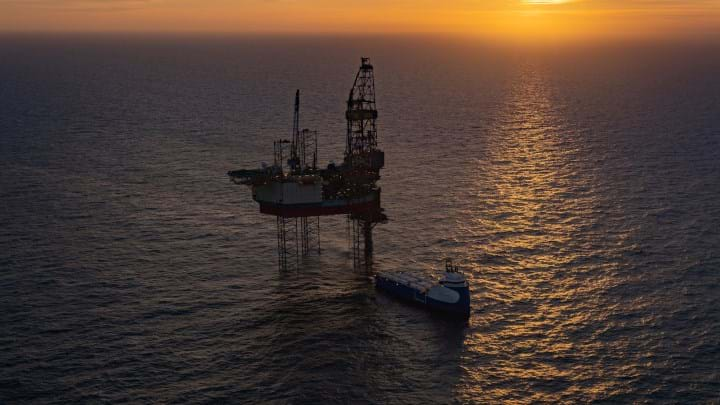Ineos announces full chain CCS milestone as emissions are buried offshore

AN INEOS led consortium has for the first time, initiated a cross-border offshore CCS project which takes captured CO2 from Antwerp, Belgium, and transports and stores it under the Danish North Sea.
Known as “Project Greensand”, the injection of CO2 into the depleted Nini West oil field in the North Sea was started by Prince Frederik of Denmark during a “First Carbon Storage” inauguration ceremony. It marks the culmination of the project’s pilot phase, while the final investment decision (FID) for a full-scale project is planned for the first half of 2024.
Ursula von der Leyen, president of the European Commission who pre-recorded an address for the event said: “This is a big moment for Europe’s green transition, and for our clean tech industry. The first ever full value chain, for carbon capture and storage in Europe. You are showing that it can be done. That we can grow our industry through innovation and competition, and at the same time, remove carbon emissions from the atmosphere, through ingenuity and cooperation. This is what Europe’s competitive sustainability is all about.”
Operated by INEOS Oil & Gas Denmark, the depleted Nini West oil field is expected to store up to 1.5m t of CO2 in 2025/2026. In the final phase, scheduled to begin in 2030, Project Greensand will be expanded to include the so-called Siri Fairway, a sand-dominated channel system in the Central Graben of the North Sea, so that up to 8m t/y of CO2 can be stored from 2030.
This is more than 13% of the total annual emissions of Denmark, however the Danish subsoil, is estimated to be able to store the next 500 years of CO2 emissions from Denmark at the current emission level.
Prior to injection, the CO2 is captured at Ineos’ Antwerp oxide site, and liquefied. It is shipped to the Nini West sandstone reservoirs – the same reservoirs of sandstone from which oil and gas have previously been extracted – in custom-built tank-containers and piped underground via the existing offshore platform and a dedicated well. The CO2 is then permanently stored in a sandstone reservoir 1800 m below the seabed.
Although the field’s geology has been the subject of study for over 20 years, and its underground structures are extremely well known, new technologies are being developed for monitoring the CO2 storage, say the consortium's leading partners INEOS and Wintershall Dea.
The project has been made possible by a deal between Belgium and Denmark, which last year became the first two countries in the world to sign a bilateral agreement on cross-border CO2 transport for permanent storage offshore.
Hugo Dijkgraaf, CTO at Wintershall Dea, said: “The first steps have been taken. Now we need more bilateral agreements to link emissions-intensive industries to CO2 storage sites in the North Sea.”
Recent Editions
Catch up on the latest news, views and jobs from The Chemical Engineer. Below are the four latest issues. View a wider selection of the archive from within the Magazine section of this site.




